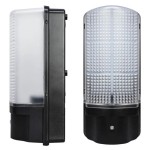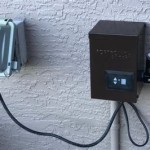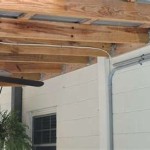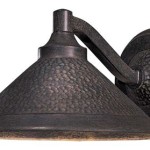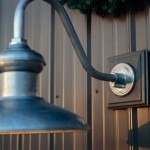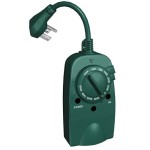What Is a Photocell in an Outdoor Light?
Outdoor lighting plays a crucial role in safety, security, and aesthetics around homes and businesses. Many outdoor lighting fixtures utilize a small but essential component called a photocell, also known as a photoelectric sensor or light-dependent resistor (LDR). This component allows lights to turn on automatically at dusk and off at dawn, providing convenience and energy efficiency. This article explores the functionality, types, benefits, and installation of photocells in outdoor lighting.
How a Photocell Works
A photocell is essentially a light-sensitive resistor. Its resistance changes based on the amount of light falling on it. During daylight hours, when ambient light is abundant, the photocell's resistance is low, allowing current to flow through it and keeping the light switched off. As daylight fades and ambient light levels decrease, the photocell's resistance increases, restricting current flow. This change in resistance triggers a switch mechanism within the lighting fixture, turning the light on. The process reverses at dawn, as increasing light levels cause the photocell's resistance to drop, switching the light off again.
The core material of a photocell is typically cadmium sulfide (CdS) or cadmium selenide (CdSe). These materials exhibit photoconductivity, meaning their electrical conductivity changes in response to light exposure. When photons (light particles) strike the photocell's surface, they release electrons within the material. This increased number of free electrons lowers the material's resistance, allowing current to flow more easily.
Types of Photocells for Outdoor Lighting
Several types of photocells are used in outdoor lighting applications, each with its own characteristics:
Integral Photocells: These are built directly into the lighting fixture, typically within the base or near the lamp holder. They are the most common type for residential outdoor lighting due to their simplicity and ease of installation. The entire fixture is designed with the photocell in mind, simplifying wiring and reducing the need for external components.
Twist-Lock Photocells: Also known as button photocells, these are designed to be easily installed by twisting them into a designated socket on the lighting fixture. This allows for easy replacement if the photocell malfunctions. They offer flexibility and are commonly used in post-top lanterns and other fixtures where easy maintenance is desirable.
Stem-Mount Photocells: These photocells are mounted on a short stem and typically wired directly into the fixture's wiring. They offer more placement flexibility than integral photocells and are often used in situations where the fixture's design doesn't accommodate an integral or twist-lock photocell.
Remote Photocells: These are separate units wired between the power source and the lighting fixture. They are used when the fixture itself isn't suitable for a built-in photocell, or when a single photocell needs to control multiple lights. They offer greater flexibility in placement, allowing the photocell to be positioned for optimal light detection.
Benefits of Using Photocells in Outdoor Lighting
Photocells offer several advantages for outdoor lighting systems:
Energy Efficiency: By automating the on/off cycle, photocells ensure lights operate only when needed, significantly reducing energy consumption compared to manually switched lights. This contributes to lower electricity bills and a smaller carbon footprint.
Convenience: Eliminates the need to manually switch lights on and off, providing automatic illumination whenever it's needed. This is particularly beneficial for security lighting, pathway lighting, and other applications where consistent nighttime illumination is desired.
Enhanced Security: Automatically illuminated outdoor spaces can deter potential intruders and enhance security around homes and businesses. The predictable on/off cycle also provides a sense of normalcy, potentially discouraging criminal activity.
Safety: Photocells ensure that walkways, driveways, and other outdoor areas are properly lit at night, reducing the risk of accidents and enhancing visibility for both residents and visitors.
Extended Bulb Life: By limiting operating hours, photocells can extend the lifespan of outdoor light bulbs, reducing the frequency of replacements and associated maintenance costs.
Installing a Photocell
Installation procedures vary depending on the type of photocell and lighting fixture. Always consult the manufacturer's instructions for specific guidance. Generally, the process involves disconnecting power to the fixture, connecting the photocell's wires to the fixture's wiring according to the wiring diagram, and securing the photocell in its designated location. For more complex installations, consulting a qualified electrician is recommended.

Install The Photocell Sensor

How To Add A Light Sensor Outdoor Lanterns The Navage Patch

Steps To Follow Add Photocell In Outdoor Lights Ledmyplace

Wall Mounted Photocell Sensor Outdoor Lighting

Photocell Outdoor Lighting Control 866 637 1530

Ip54 Outdoor Light Sensor Switch Photocontrol China Photocell Control Made In Com

Light Control Socket With Photocell Sensor Outdoor True Value

Electrical Wiring From A Photocell To An Outdoor Led Floodlight Or Reflector 110v Devices

Hardwire Post Eye Light Control With Photocell Automatic Sensor Switch Ledwholers

Solus Photocell Light Sensor Switch For Hardwire Outdoor Lamp Posts With Ezee Change Plug Dusk To Dawn Control
Related Posts
